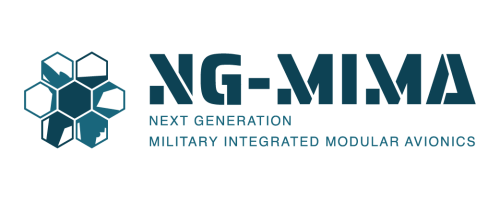Global Avionics Round-Up from Aircraft Value News (AVN)

Logo for the Next-Generation Military Integrated Modular Avionics (NG MIMA) project, driven by a €30 million investment under the European Defence Fund.
Europe is entering a pivotal new era in avionics. The recently launched Next-Generation Military Integrated Modular Avionics (NG MIMA) project, driven by a €30 million investment under the European Defence Fund, is reshaping military avionics by setting new standards for modularity, cybersecurity, and system interoperability.
NG MIMA’s innovations promise to spill over into the civilian aviation sector, impacting everything from upgrade cycles to smart cockpit design.
What Is NG MIMA?
Launched in December 2024, NG MIMA brings together 21 top-tier European companies, universities, and research centers—including Airbus Defence & Space, Thales, Saab, Honeywell, Leonardo, and BSC-CNS—under the coordination of Spanish-based defense and IT company Indra.
Over a three-year timeframe, the aim is to develop a scalable, open, modular avionics architecture that’s interoperable across both manned and unmanned platforms. Rooted in high data-sharing, processing needs and multi-domain operations—including land, sea, air, space, and cyber—the project aims to redefine how avionics systems are built, maintained, and evolved.
NG MIMA is crafting architectures that support hardware and software modularity, allowing avionics systems to be more easily upgraded or reconfigured across their lifecycle. Gone are the days of bespoke, single-platform solutions. Now, components can evolve independently as new technologies emerge.
EU-wide standardization allows allied forces to use common avionics systems, easing joint operations and fostering defense autonomy. Military missions now bridge multiple domains. NG MIMA supports high-level principles to enable seamless integration and data exchange among diverse platforms.
Commercial Aviation: The Surprising Winner
The innovations from NG MIMA don’t just stay on military jets; they’re poised to catalyze sweeping changes across commercial aviation.
Commercial aircraft are notoriously sluggish in adopting new systems due to chunky certification processes. NG MIMA’s modular approach, mirroring ARINC standards and partitioned architectures (à la DO‑178C/ARINC‑653), could serve as a blueprint for civilian ORBOKs and avionics upgrades. Airlines could swap in updated modules without re-certifying the whole system.
As cockpits integrate satellite comms, AI, and datalinks, NG MIMA’s emphasis on cybersecurity could encourage stronger civil aviation standards and potentially shift international regulators toward European-designed cybersecurity frameworks .
NG MIMA’s high-performance computing and cloud-aligned modularity (including AI and HMI advancements) are on par with trends in commercial avionics, such as predictive maintenance and augmented reality interfaces. A shared architectural future could unlock more seamless cross-domain innovations.
Why the Convergence Makes Sense Now
NG MIMA’s timing is strategic. Military platforms are pushing boundaries with real-time data fusion, sensor integration, and AI, capabilities that commercial aviation is also pushing toward. Take the Gripen fighter: with its software-defined avionics, it’s already straddling military-civil tech roadmaps.
Other European avionics firms, e.g. Thales, GE Aviation, Honeywell, and Collins, already serve both markets. NG MIMA can become a shared technological backbone, lowering R&D costs and boosting industrial cohesion across sectors.
By 2027, NG MIMA is slated to deliver a working reference platform demonstrating modular, cyber-hardened, interoperable avionics. Commercial aviation stands to benefit from modular software stacks, plug-and-play upgrades, predictive cyber defense, AI driven HMI—and ultimately digital avionics architectures that feel less like fossilized flight decks and more like evolving digital platforms.
This article originally appeared in our partner publication, Aircraft Value News.
John Persinos is the editor-in-chief of Aircraft Value News.